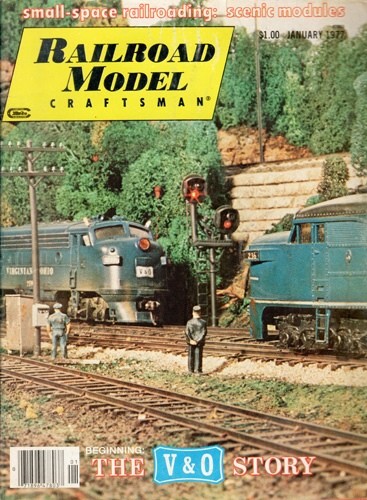It seems like yesterday when the internet launched and was quickly followed by the meteoric rise of Amazon.com. The old timers in the group may remember that Amazon started out in a books only format. With stunning speed, brick and mortar bookstores dropped like flies. Like many, I really thought they were toast forever. A few years ago I noticed something interesting, they weren’t all toast. Scrappy Barnes and Noble dumped the big, high rent stores, and rented smaller spaces in mid-tier and upper tier strip malls. Then, word came that B&N was actually opening more stores. What happened? The sky wasn’t falling, we just had a new environment and the better businesses adjusted, survived, and then thrived.
As I listen to model railroaders discuss the print vs. digital aspect of our hobby I hear a lot of self-righteous chest pounding from both sides, each trying to convince the other that their approach puts them closer to heaven. Lost in the discussion is that nobody really cares what the hell somebody else is reading or where they get their information. Continuing my ongoing theme of being selfish, a lot depends on how immersed you are in the hobby, and what you’re looking to accomplish on any given day. Do what’s best for yourself given your situation but at least have the facts so you can indeed serve your needs most effectively. For the casual recreationalist and the non-modeler fans of the hobby, digital media, surfing Facebook, and the forums probably meets their needs. For the modeler that’s more immersed in the hobby, for lack of better terms the more serious and driven modelers, a blended approach is needed to attain the pinnacle of superior designs, plausible operating sessions, and top flight construction workmanship.
What’s at play, and it’s fascinating to me, is the science of how the brain processes and retains information depending on the format. In an exceptionally well written blog on the subject Lisa Fitzgerald writes, “Neuroscience suggests that printed marketing materials tend to outperform digital when it comes to reading comprehension, recall, emotional impact and persuasiveness.” She goes on to write, “The researchers first asked college students which medium they preferred to use for studying, and which they felt offered them the best recall. Students overwhelmingly chose digital content for both responses. However, when they were tested on their actual retention of information, the results demonstrated that these student clearly had better recall after reading printed materials.”
If this sounds like I’m laying the foundation for a print only argument I’m not. The article concludes with my point, “For various reasons, it may be optimal to distribute and read less complex materials—including simple how-to guides, marketing collateral, short fiction and some kinds of professional documentation—solely through digital channels. That said, studies have found improved comprehension and recall when content is consumed in a printed/analog format.”
For staying socially connected and low key “brain candy”, I use Facebook. For “How To” tutorials and watching prototype operations you can’t beat YouTube. But, if you’re truly serious about advancing your skills, you need the dig deep, vetted, well-edited, hard copy print copies. Probably the best example is the world changing V&O series in RMC decades ago. A more recent example is the exceptionally well written and edited Canton Railroad piece in Railfan and Railroad Magazine (August 2023) which, if you sit down over coffee and read several times, tells you how to design a model railroad. For myself, I utilize a blended approach of online media, print subscriptions, ad hoc single issue purchases, annuals, and books. You would be hard pressed to find a truly great modeler that doesn’t read print on a regular basis.
